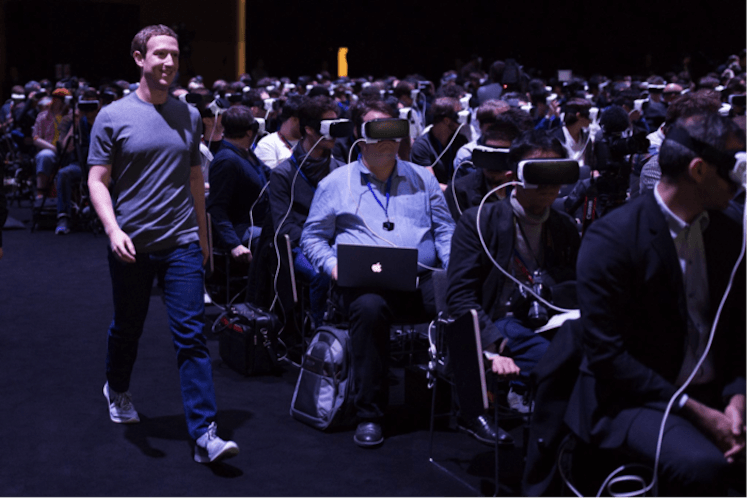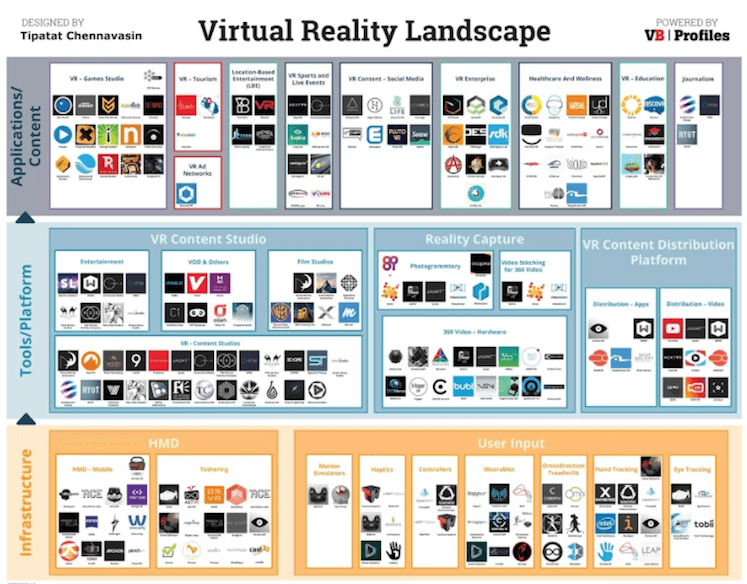A year ago, at Mobile World Congress 2016, Samsung announced its first million hardware shipments. This marked the first time a major VR headset manufacturer had reached this milestone. At this same time last year, Mark Zuckerberg’s surprise appearance in Barcelona, surrounded by an audience all in VR headsets, sparked excitement for the future of VR. The image went viral and capital, entrepreneurs and brands made significant investments into the space
Today, a year later, critics question whether VR is just a fad or whether it is the next major computing platform. With holiday sales of headsets underwhelming expectations, the cynics commentary has gotten louder. It is important for everyone to keep in mind, that just 12 months ago, there was no HTC Vive on the market. Even Daydream, Playstation and Oculus launched in just the past 6 months. So any opinion or commentary on the space feels too early.
See also: Eonite VR tracking software makes sure you don’t lose your head
As a VR platform working closely with brands, publishers, and VR content producers, we have seen consistent increased demand in the VR ecosystem over the course of the past year. Rather than sharing an opinion piece of whether this is the year of VR or not, I wanted to share the data that we are seeing from real business and real consumer engagement with our products.
What we see today is higher consumer engagement, higher quality content, and more demand from brands than ever. This February marked a new record with substantial year-over-year growth. Today, we have helped more than 100 brands and publishers deliver over 100 million VR ad impressions. Here are the key takeaways based on our data and case studies.
Consumers engage with VR 10X higher
The real question to justify whether VR actually will take off is around consumer engagement. Almost every brand has asked what the uplift and engagement will be when they invest in VR. For every campaign, we have run both VR and 2D experiences to compare the performance across the same placement. We started by comparing 360° photos with 2D images. Then, we compared 360° VR videos with 2D videos. These experiments were performed across all platforms, including VR headsets, smartphones, tablets, and desktops.
We measured heat-map (eyeballs) tracking, time spent in the experience, and click-through-rate for the display units. All data suggests that VR experiences gain higher attention from audiences. With higher engagement from audiences, brands can ensure that their message is delivered more effectively.
Brands are investing even more in VR technology
Initially we thought VR experiences made sense for Travel and Real-Estate. The nature of their products is one that aligns well with a 360° experience. In reality however, we have seen a broad range of VR content from brands. You may not think a VR campaign would be straightforward for insurance, alcohol, kitty litter, or even fast food companies, but we have seen brands from all verticals bring audiences into their narrative through this immersive media format. Below are just some examples:
IBM, Morgan Stanley, Honda, Infiniti, GE, Toyota, Google, Microsoft, NASA, Uber, Cartier, Coach, United Airline, Farmer Insurance, Ford, Mercedes, Cadillac, Maxis Telecom, Chevron, Volkswagen, Johnny Walker, Caudalie, KIA, Clorox, RYOT, Samsung, Lexus, Netflix, Fifty Shades, Chick-fil-A, Jack-In-The-Box, Herbalife, Tourism Australia, Hitachi, Porche, Time-After-Time, US Army, and American Home Insurance.
Our takeaway: every brand can effectively use VR for its marketing. Immersing your potential customer in your brand’s narrative is not a new objective to the marketer, and VR is being experimented with and successfully executed by creatives the same way we have seen these brands lean into online video 10 years ago.
And production value is getting stronger as well. One year ago, stereoscopic 360° content (VR content that is created for dimension of left and right eyes) was still in the lab. Not many brands and production partners knew how to film it. Today, we are serving advertising campaigns with stereoscopic video on a daily basis. We are receiving inbounds about spatial audios (360° audio), 8K resolution, 180° 3D (theater-like experience), and Web VR (Web Browser inside VR headsets). This all demonstrates deeper engagement with the medium. Brands, agencies and their production partners are learning into this technology and creating better VR experiences by the day.
Brands are seeking more eyeballs
One of the most important metrics for a VR production is the number of people it reaches. While costs are coming down, investing in VR production for a marketing campaign is only as useful as the number of people that can access it. Today we are seeing VR content being distributed in many forms. People often think that VR content has to live inside a VR app only. However, we have found our customers use our technology to promote their content outside their VR app. These channels include pre-roll/display ad inventory, sponsored editorial, microsites, and even Snapchat.
Distribution on VR platforms today is highly fragmented, and there are multiple devices to choose from. Each requires unique technical work to implement adding additional cost and time to the production. We have found that while many brands will invest in those placements, they are eager to extend their reach and deliver as much viewership as possible on the creative content they have built.
Today, the VR platforms are still new. HTC Vive, Oculus Rift, PlayStation VR and Google Daydream have been in the market for less than one year. The journey of this new advertising medium will continue to evolve. Given the growth we have seen on our platform over the past 12 months, we are very excited for what 2017 has in store.
This article is part of our Artificial Intelligence series. You can download a high-resolution version of the landscape featuring 431 companies here.
About OmniVirt: OmniVirt is 360° Video and Virtual Reality advertising platform that distributes 360° VR advertisements.





















